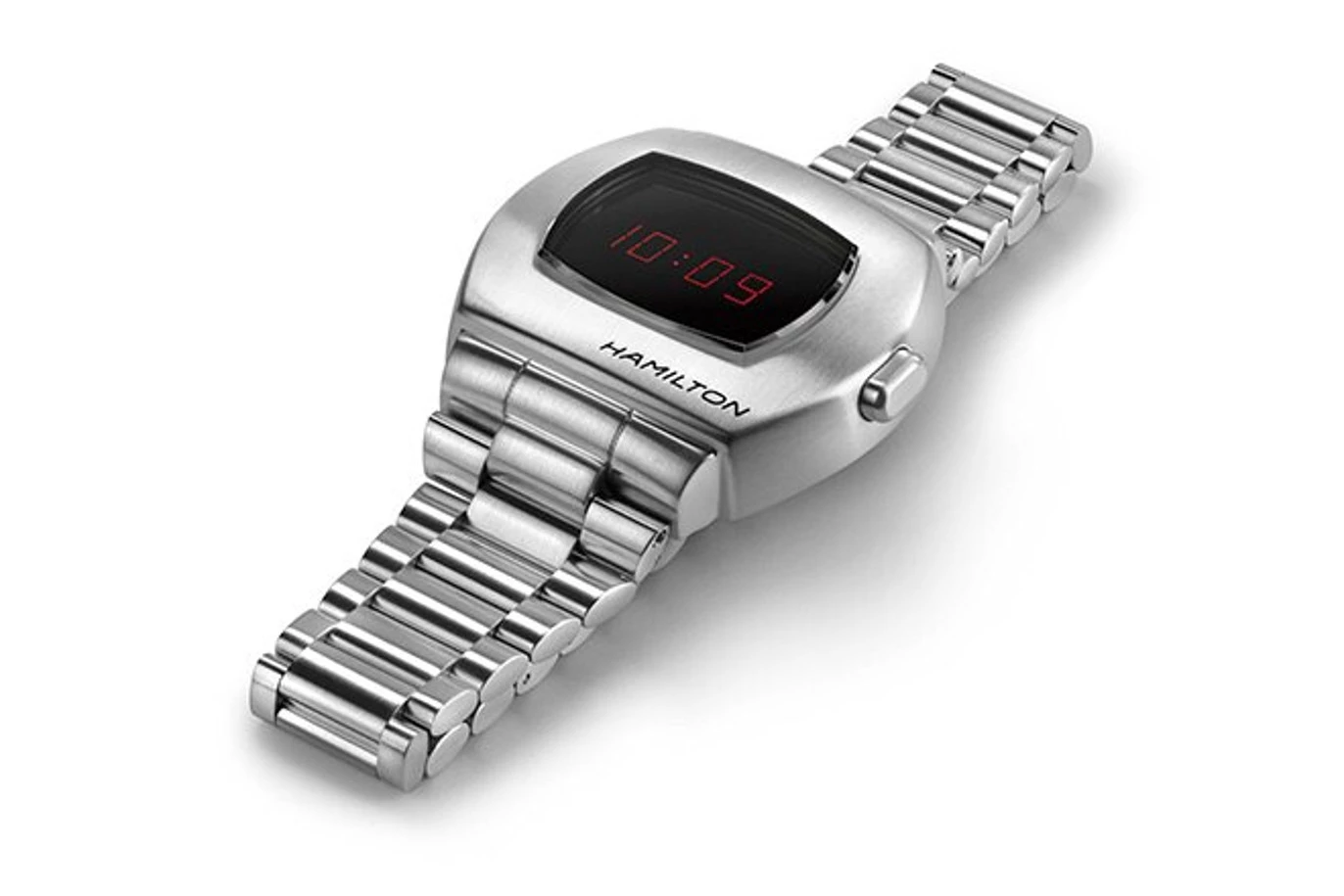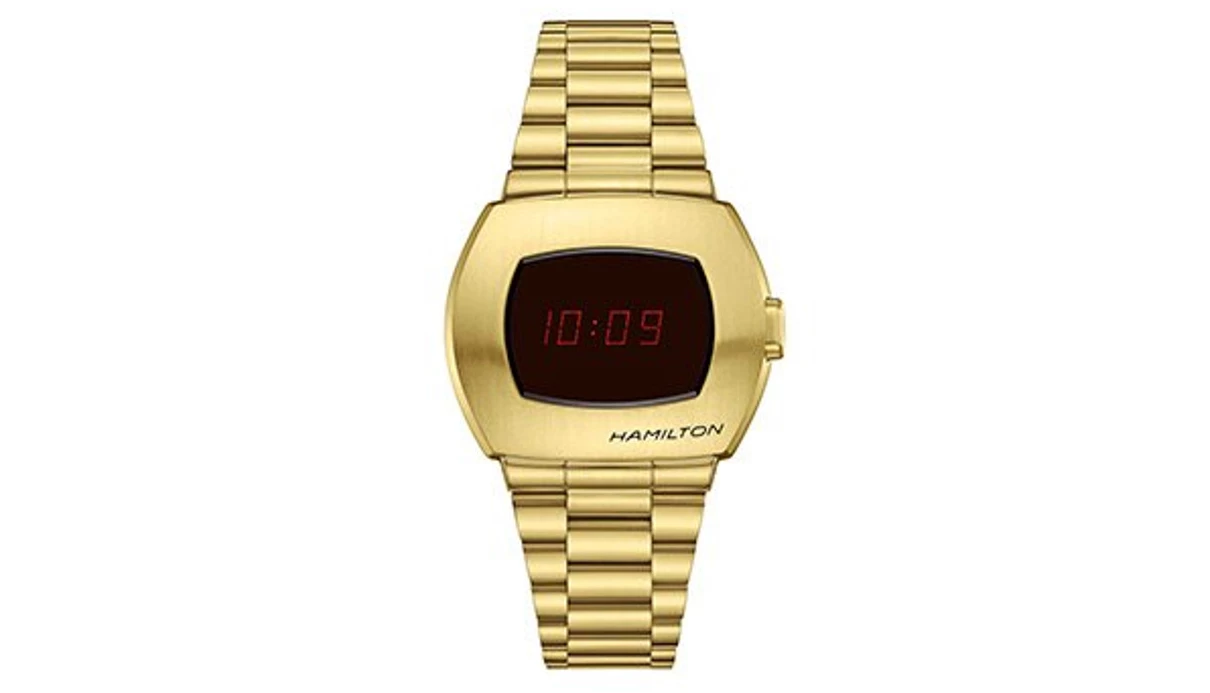One of the truly revolutionary watches of the 20th century is making a comeback as Hamilton Watch issues an updated version of its iconic Pulsar – the world's first electronic digital wristwatch. Called the Hamilton PSR, the 50th-anniversary edition combines the then Space Age style of the original with an updated OLED/LCD hybrid display.
On May 6, 1970, in a press conference at the Four Seasons restaurant in New York City, Hamilton Watch revealed its Pulsar watch to the world. It was a quartz watch, which wasn't new – Seiko had presented its Astron quartz wristwatch five months earlier. But where the Aston had an analog mechanical display, the Pulsar had no moving parts and an LED digital display set behind a red crystal made of artificial ruby.
In 2020, when digital watches can be bought for a dollar, that may not seem like anything to write home about, but in 1970, it was like being beamed aboard the starship Enterprise. In fact, the name of the watch came from the recently discovered pulsars, mysterious stars that blasted out radio pulses at precise intervals, and its aesthetic design was based on clocks and watches that Hamilton had created for Stanley Kubrick's sci-fi epic, 2001: A Space Odyssey.

The US public got its first look at the Pulsar on The Tonight Show, where presenter Johnny Carson showed off its futuristic features of displaying the time in glowing numbers at the touch of a button and then the seconds if the button was held down. Unfortunately, the influential interviewer's verdict was that it would never put Mickey Mouse out of a job.
Despite this poor review, this first watch to be made entirely out of solid-state electronics was a sensation. It didn't tick and you set the time using a special magnetic bar hidden in the bracelet. And when the first Pulsar, the P1, in 18 karat gold went on sale, it was snapped up by the rich and famous despite its price tag of US$2,100 (US$13,641 in 2020 dollars) – the equivalent of a family car of the day.
The Pulsar, in its various iterations, was worn by such celebrities as Jack Nicholson, Joe Frazier, Elton John, Keith Richards, Elvis Presley, Sammy Davis Jr, Giovanni Agnelli, and President Gerald Ford. Even James Bond wore one in the 1973 thriller Live and Let Die. Before the rush of various tech companies started driving down the price of digital watches, Hamilton was pulling in as much as US$150 million a year off the Pulsar.

The new PSR is an updated version of the original Pulsar, with the same cushion case and metal bracelet, and the same LED display (though in a more energy-efficient OLED form), but this time it's backed up with an LCD that shows the time in daylight conditions.
The new Hamilton PSR is available in two models. One is a stainless steel version and the other is stainless steel coated in yellow gold PVD that is limited to only 1,970 units. Both have digital quartz movements set in a cushion case measuring 40.8 x 34.7 mm that is water-resistant to 10 bar (100 m, 330 ft). Both come with matching metal bracelet.
Available later this year, the PSR goes for US$745 for the stainless steel, and US$995 for the yellow gold PVD.
The video below introduces the Hamilton PSR.
Source: Hamilton Watch








